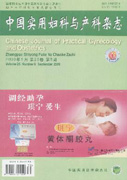Preterm birth means that a baby is born before 37 weeks of pregnancy.At present,preterm birth occurs in about 15 million infants, and 1 million among them die within 1 month. Therefore,preterm birth,as a global problem,induces heavy burden on the society. So it is urgent to investigate the mechanisms of preterm birth and find appropriate methods to prevent the incidence of preterm birth. Here we explore three aspects of maternal-fetal interface microenvironment:trophoblast, decidua,and immue cells,to explain how microenvironment change of fetal-maternal interface plays a role in preterm birth.

